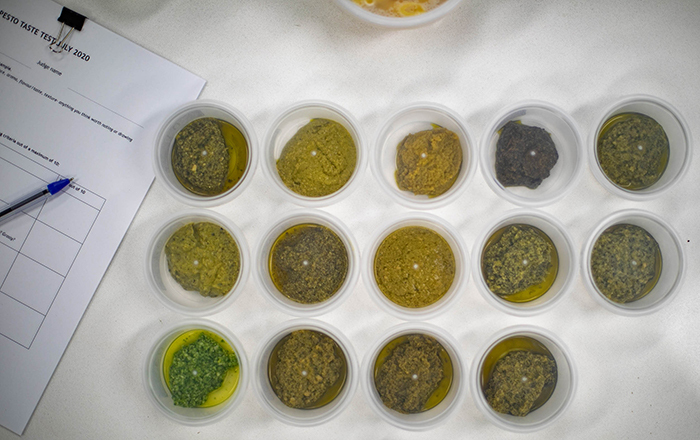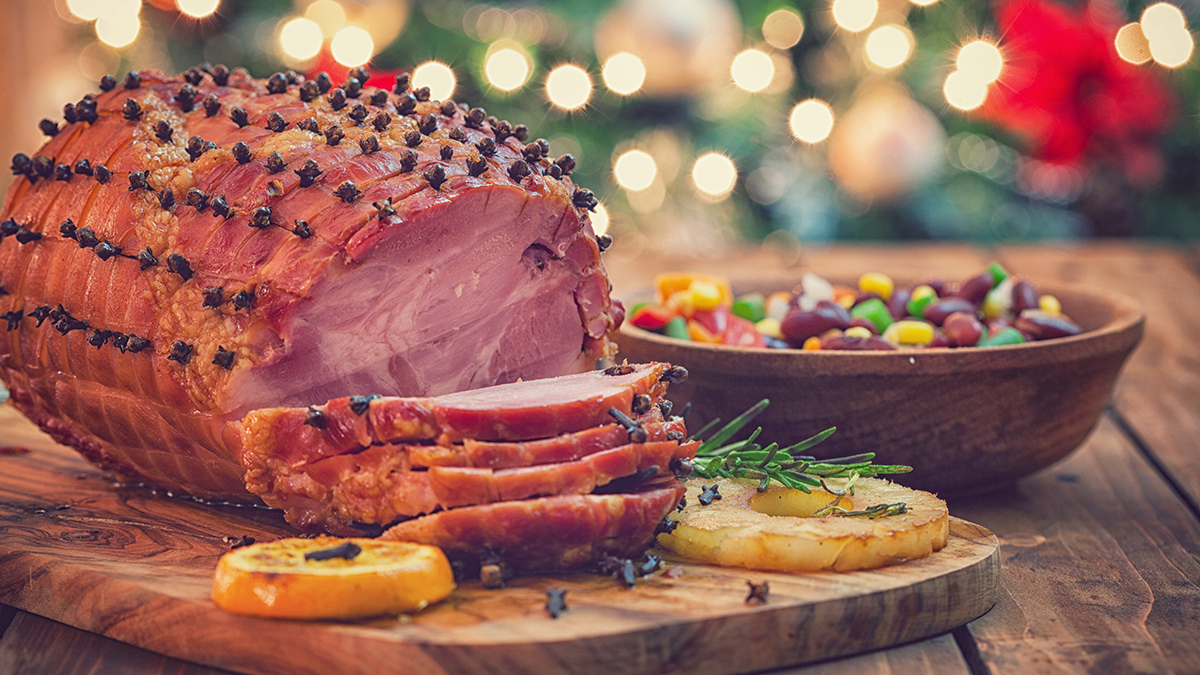Get our independent lab tests, expert reviews and honest advice.
Which basil pesto is best?

Originating in Genoa, Italy, pesto is a sauce traditionally made from a combination of basil leaves, pine nuts, garlic and a hard cheese such as Parmigiano-Reggiano (parmesan) or Pecorino sardo (made from sheep’s milk) blended together with extra virgin olive oil.
On this page:
- Best pesto
- Pesto products compared
- Ingredients in store-bought pesto
- Australian-made pesto
- Is pesto healthy?
- Pesto recipe
- Meet our expert taste testers
Pesto is easy enough to make, but it’s even easier to buy a jar of it from the supermarket, and each year Australians spend more than $27 million doing just that. Stir it through pasta and you have a deliciously herbaceous, salty, zingy meal in mere minutes. Its uses in savoury food are only limited by your imagination.
So which store-bought pesto tastes best? Is it good for you? And where does the pesto on our supermarket shelves come from?
We review 13 supermarket pestos from brands including Barilla, Jamie Oliver, Leggo’s, Mutti, Sacla and more, to find out which pesto is pitch perfect.
Best pesto
This is the highest scoring supermarket pesto in our taste test.

Sacla Italia Basil Pesto “Free From”
- CHOICE Expert Rating: 75%
- Price: $4.90 for 190g jar ($2.58 per 100g)
- Good to know: This pesto is dairy-free and uses tofu as a cheese substitute, so is suitable for vegans and people with a dairy allergy or intolerance. It’s 38% basil, includes cashew and pine nuts, and is one of the least salty products in our test (480mg per 100g).
- Our testers say: “Vibrant olive green, some oil separation and noticeable nuts and herbs. Fragrant basil aroma. Flavour is balanced, noticeable basil with a slight acidic finish. A pleasant, even, soft and creamy texture that coats pasta well.”
The following supermarket pesto was the runner-up, and the only other product on test that received an overall score of 70% or more.

Jamie Oliver Green Pesto
- CHOICE Expert Rating: 72%
- Price: $5.30 for 190g jar ($2.79 per 100g)
- Good to know: This is the most expensive pesto in our test. It’s also the least salty (just 355mg per 100g). It’s 38% basil, 18% extra virgin olive oil, contains both cashews and pine nuts, and has a cheese combo of Grana Padano and Pecorino Romano.
- Our testers say: “Olive green with a vibrant oil colour, pleasant appearance with ‘bits’ of ingredients apparent. Subtle grassy, basil, acidic aroma. Can taste the basil and cheese, not too salty, with a slight acidic aftertaste. Smooth, fibrous texture interspersed with good chunky bits. Sticks well to pasta.”
Pesto products compared
Looking for the cheapest pesto? The product with the most basil? The pesto lowest in salt? Check out the tables, below.
For full details, including taste test scores and country of origin – and to see how your favourite pesto rated – visit our pesto review.
How much does store-bought pesto cost?
Price per 100g ($), in rank order from cheapest to most expensive.
- Aldi Remano Basil Pesto: $0.99
- Coles Basil Pesto: $1.03
- Woolworths Basil Pesto: $1.03
- Coles Italia Pesto Al Basilico Basil Pesto: $1.21
- Mutti Pesto Style Stir Through Sauce Green Tomato: $1.79
- Galiko Basil Pesto: $2.07
- Barilla Pesto Alla Genovese: $2.11
- Barilla Pesto Basil & Rocket: $2.11
- Leggo’s Pesto Basil: $2.42
- Leggo’s Providore Series Pesto Italian Basil, Pecorino and Pine Nut: $2.56
- Sacla Italia Basil Pesto “Free From”: $2.58
- Sacla Italia Pesto Classic Basil: $2.58
- Jamie Oliver Green Pesto: $2.79
How salty is store-bought pesto?
Sodium per 100g (mg), in rank order from lowest to highest.
- Jamie Oliver Green Pesto: 355
- Sacla Italia Basil Pesto “Free From”: 480
- Woolworths Basil Pesto: 525
- Coles Italia Pesto Al Basilico Basil Pesto: 690
- Leggo’s Providore Series Pesto Italian Basil, Pecorino and Pine Nut: 722
- Leggo’s Pesto Basil: 814
- Mutti Pesto Style Stir Through Sauce Green Tomato: 951
- Barilla Pesto Basil & Rocket: 1240
- Sacla Italia Pesto Classic Basil: 1300
- Barilla Pesto Alla Genovese: 1300
- Aldi Remano Basil Pesto: 1320
- Coles Basil Pesto: 1320
- Galiko Basil Pesto: 1400
How much basil does store-bought pesto contain?
% basil, in rank order from highest to lowest.
- Galiko Basil Pesto: 58%
- Jamie Oliver Green Pesto: 38%
- Sacla Italia Basil Pesto “Free From”: 38%
- Aldi Remano Basil Pesto: 36%
- Sacla Italia Pesto Classic Basil: 35.2%
- Leggo’s Pesto Basil: 34%
- Leggo’s Providore Series Pesto Italian Basil, Pecorino and Pine Nut: 32%
- Woolworths Basil Pesto: 31%
- Coles Italia Pesto Al Basilico Basil Pesto: 31%
- Barilla Pesto Alla Genovese: 30%
- Coles Basil Pesto: 28%
- Barilla Pesto Basil & Rocket: 20.7%
- Mutti Pesto Style Stir Through Sauce Green Tomato: 12.5%
Ingredients in store-bought pesto
The ingredients in store-bought pesto frequently vary from the traditional recipe.
- Oil. While olive oil tends to appear somewhere in the ingredients list, the main oil used in the majority of the products is sunflower oil. Jamie Oliver Green Pesto is the only product to use primarily extra virgin olive oil.
- Basil. After oil, basil is the predominant ingredient in all but one of the pesto products we tested. Basil content ranges from 58% (Galiko) down to 12.5% (Mutti, which has more green tomato than basil). These two products aside, the basil content of store-bought pesto is typically about 30%.
- Nuts. Cashews are the most common nut used in the products in our test (11 of 13 contain cashews). Only 5 of 13 products in total contain pine nuts – Leggo’s Providore Series Pesto Italian Basil, Pecorino and Pine Nut keeps things closer to authentic by using pine nuts only, and four others use a cashew/pine nut combo. Leggo’s Pesto Basil uses an almond/cashew combo, and Galiko is nut-free.
- Cheese. Pecorino is used in 10 of the 13 products tested, often in combination with Grana Padano (essentially a cheaper version of Parmigiano-Reggiano, found in 8 of the 13 products). Barilla Pesto Alla Genovese uses parmesan only, and Barilla Pesto Basil & Rocket combines ricotta with the pecorino.
Australian-made pesto
Only two of the pesto products we tested are made in Australia:
- Galiko Basil Pesto (58% Australian ingredients)
- Leggo’s Pesto Basil (50% Australian ingredients)
The remainder are made in Italy.
Is pesto healthy?
Partly, yes. Pesto is rich in vitamins, minerals and good-for-you monounsaturated fats. But it’s also energy dense (high in kilojoules) and is often very salty.
Choose lower sodium versions (less than 400mg per 100g) where possible. And as with many foods, it’s best eaten in moderation. Thankfully, a little goes a long way.
Vegan pesto
While most of the basil pesto we found on the supermarket shelves contain cheese, two of the store-bought pesto products are vegan:
- Sacla Italia Basil Pesto “Free From” (which topped our taste test, and uses tofu as a cheese substitute)
- Galiko Basil Pesto
Homemade pesto
Pesto recipe
Prefer to make your own from scratch? Follow this recipe from CHOICE home economist Fiona Mair and you’ll have a delicious basil pesto ready to go in just minutes.

How to make pesto
Ingredients
- 2 cups fresh basil leaves, packed
- 1 tablespoon lemon juice
- ¼ cup toasted pine nuts
- 50g parmesan cheese
- ¼ garlic clove
- ½ teaspoon salt and pepper to taste
- ¼ cup extra virgin olive oil
Method
- Place basil, lemon juice, pine nuts, parmesan cheese, garlic, salt and pepper into a mini processor or a food processor with a small bowl.
- Pulse for a few seconds then pour in the olive oil.
- Process for 5 seconds for a chunky pesto or 10 seconds for a creamy, smooth texture.
Tips
- Use only the basil leaves and discard the stalks, as the stalks can make the pesto bitter.
- Add half rocket leaves or baby spinach leaves, and half basil leaves to soften the basil flavour.
- Use cashews or walnuts instead of pine nuts.
- Homemade pesto can be stored in a sterilised jar for a week. Just drizzle with a layer of olive oil to prevent oxidisation.
- Pesto can be frozen in ice cube containers, to be used when desired.
Uses
- Add to pasta with extra grated parmesan cheese.
- Add a couple of tablespoons to a pasta salad.
- Dollop onto a pizza or in your lasagne.
- Spread on toasted Turkish bread with marinated vegetables.
- Use as a dip with focaccia or pita bread.
Meet our expert taste testers

The food writer
Brigid Treloar has been a freelance food consultant for over 30 years. The author of eight cookbooks, she also contributes to newspapers and magazines, reviews restaurants, judges cookery and recipe competitions, and is Chair of Judges for the Fine Food Specialty Foods Competition (which includes a pesto category). Brigid has presented specialist cooking classes in Sydney, around Australia and overseas, and often appears on TV and radio. She’s an industry assessor for Le Cordon Bleu, advises many of Australia’s food companies on product and recipe development, and also provides recipes and cooking information for company websites.

The pesto lover
Ashley Iredale‘s role as a content producer for CHOICE, focusing on whitegoods, combines his manufacturing, product and industrial design knowledge and years of experience in the consumer goods industry, with his communications and publishing skills to help Australian consumers choose the best value, best performing appliances for their needs. Self-described as being “interested in absolutely everything”, Ash is a passionate foodie who dabbles in breadmaking and pickling in his spare time. Conveniently, he also adores pesto.

The home economist
Fiona Mair has cooked more than 8000 scones, 4000 chickens, 3000 sausages, 1000 meringues and 500 pizzas, to test more than 3000 appliances, in the years she has worked at CHOICE as a test coordinator. She develops the recipes for testing kitchen appliances, helps conduct food taste tests, and has judged coffee in the testing of coffee machines. Fiona has a finely tuned palate and has been on the judging panel for a number of taste tests for CHOICE, including strawberry jam.



How we test
Products
We tested 13 pesto products that are available in major supermarket chains. Price is based on a 190g jar (or closest) bought in Sydney stores (not on special) in May/June 2020.
Tasting
Pesto samples were dispensed into coded containers immediately prior to the test. Our experts tasted the pesto samples ‘blind’ (without knowing the brands).
Scores
Experts independently judged all pesto products, scoring each sample for appearance, aroma, flavour and texture. The CHOICE Expert Rating is made up of taste 90% (50% flavour, 20% texture, 20% aroma and 10% appearance) and nutrition 10% (based on the Health Star Rating, calculated from the details in the nutrition information panel and converted to a percentage).
We recommend products with a CHOICE Expert Rating of 70% or more.






